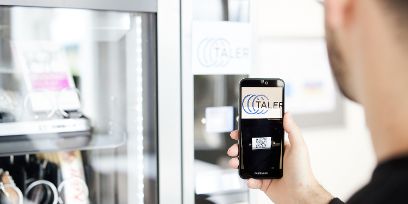- News
Digital euro: The central bank of Austria recommends the GNU Taler system
07.07.2022 Like cash, but virtual: this could be the digital euro. Its benefits and possible implementation are discussed in a report by the Austrian Central Bank, which recommends the GNU Taler, a system developed by researchers at the Institute for Cybersecurity and Engineering ICE of Bern University of Applied Sciences BFH in collaboration with Taler Systems SA.
There is an increasing need for digital payment methods, which leads to an increase in the products on offer. Companies such as Apple, Google and Amazon now have their own payment systems, and Apple even has a banking license. These new players may one day dominate the payment sector, which entails a number of problems: on the one hand, this would give companies even more information about their customers than they already have through search queries and online purchases. On the other hand, certain individuals or companies (the competitors, for instance) could be denied access to the payment system. Ultimately, this could lead to a fragmented monetary system and jeopardise universal access to public money issued by central banks. So how can we ensure that the monetary system continues to work in the public interest in a digital future? This is where the digital euro comes into play.
GNU Taler, a model for a digital euro
The digital euro is not meant to replace cash but to supplement it in order to meet the requirements of the digital age. The Austrian National Bank presented a report on the future of cash and what an implementation of the digital euro might look like. It discusses various concepts, including blockchain-based applications, and concludes that the system as applied to the so-called “GNU Taler” could be an ideal template for the digital euro.

Anonymous just like a cash payment
The GNU Thaler has been developed since 2016 by a group of developers led by Christian Grothoff, professor of Computer Science at Bern University of Applied Sciences BFH, and hosted at BFH. Unlike with other digital payment systems, the user remains anonymous. As with cash payments, it is therefore impossible to track who has spent money, and on what. However, the receiver of the payment is known to the state, who can check whether the right amount of income tax is paid.
And unlike in blockchain-based technologies, transactions in the Taler system are fast and efficient. Whereas four Bitcoin transactions can be made per second worldwide, moreover by using a large amount of energy, 28’500 Taler transactions per second are currently possible, with further upside potential.
